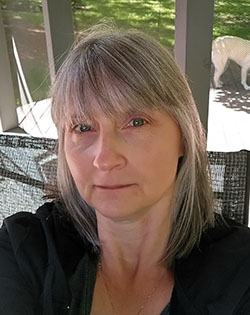
- Associate Professor, Graduate Coordinator, and Assistant Department Chair
- trini.stickle@wku.edu
- Cherry Hall 112
- 270-745-5710
Writing in the Disciplines; Language and Communication
I completed my PhD in fall of 2015. I also have an M.A. in Applied English Linguistics with a TESL certificate from the University of Wisconsin-Madison; an M. A. in Humanities from California State University, Dominguez Hills; and a BA in English from Minot State University, Minot, North Dakota.
I have taught a variety of linguistics and writing courses as well as skill-based English as a Second Language courses. Having been involved in research the last several years, I am very happy to return to the classroom to teach within the general education program in the English department. Additionally, my favorite course to teach is introduction to syntax, or grammar, so teaching the Language Communication course (ENG 302) is the venue where I can really “geek out” and share some really complex aspects of language that we so often take for granted.
I am interested in using the study of dialect as a way to address prejudice in society. I am involved in creating secondary and post-secondary curricula that uses the interview, print, and online materials of the Dictionary of American Regional English (DARE) to introduce students to linguistics, sociolinguistics, and language variation. The goal for the Discovering Dare curricula is to provide students the opportunity to better understand and value the languages of all speakers.
My research focuses on interactions involving persons whose communication processes are affected by acquired or developmental cognitive issues (e.g., dementia, autism). I use conversation analysis and interactional linguistics (syntactic, phonetic, and prosodic analyses) to document how participants use verbal, vocal, and embodied resources to collaboratively produce meaningful social actions. Specifically, I rely on these methods to highlight the interactional resources and practices employed by the participants as they navigate their conversations. My hope is that this work will contribute to better communication practices for practitioners, caregivers, and family members as they share in conversations with their patients or loved ones.

